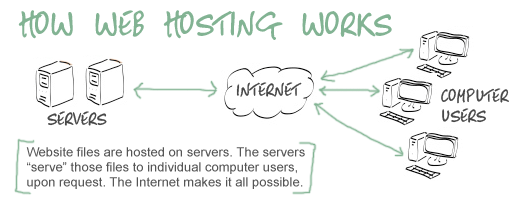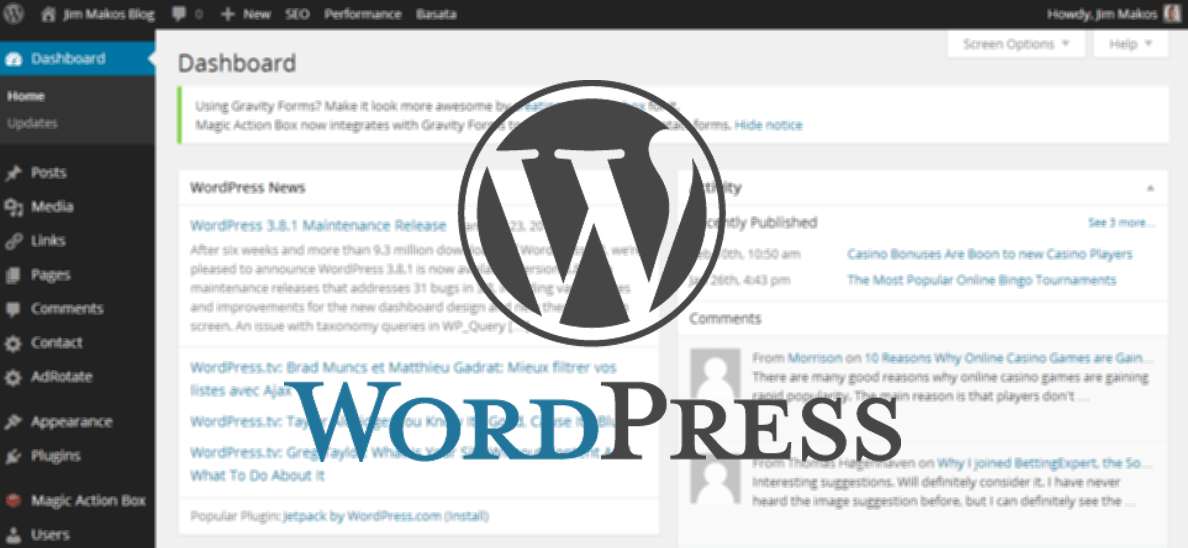Web development is as easy as following these four steps. In no time at all, you can have a beautiful, reliable, and fast website at a minimum cost.
In the realm of web publishing, creating a digital home is essential, as relying solely on social media is akin to building on rented land, where the rules can change, and ownership is never truly guaranteed.
Building a website for your business or creating a personal blog to share your thoughts with the world is easy. Almost no programming skills are required, although you need to learn the basics of web development. More specifically, you must become familiar with domain registration, web hosting, and WordPress. And you are going to learn all that today, here.
I know it is easy because, as a web publisher myself for more than 15 years, I created so many websites by learning everything online for free. I am sure you can manage that too! And I suppose it will be easier because I have collected everything that helped me through the process in the lines below. Therefore, read on, and by the time you will finish reading, you will have a pretty clear view of how to start and where you are heading to.
As in other pages of this blog, I am recommending some products or services below that I have personally tried and continued using for my web development needs. I do not include anything unknown to me.
Jumpstart your web development career by registering a well-thought-out domain name
Building a content website in real estate terms:
— Jim Makos (@JimMakosCom) September 30, 2018
You buy land (domain). Location (name) is everything.
You build a building (website).
Expert(s) share knowledge in offices (pages).
People visit the offices (traffic).
Install billboards outside (advertising).#webdevelopment
I have avoided building websites at free services such as Blogger (domains ending in blogspot.com). I suggest you do the same. You are creating something valuable. Why not keep that value to yourself?
Yes, I strongly recommend registering your own domain.
Besides, if you are creating a website for your business, your domain is part of your business. You would not rent a small corner in another company’s office to run yours, would you? You would rent a whole office to yourself. So, buy a domain!
Buying a domain is easy. You pick a domain registrar, open an account and begin buying domains. You will quickly see the point of registering multiple domain names for your business or blog, even with extensions like .net or .co. For example, I own both jimmakos.com and jimakos.com (noticed the typo?) and jmks.co for my URL-shortening service.
Nevertheless, restrain yourself from overspending.
Pick a reliable and affordable hosting company for your website
Now that you bought the sign (domain name) outside your office, it is time to rent the actual office where the sign will hang. This is the time when web hosting comes in.

Consider hosting like renting an office, where you will place all the furniture and equipment you will need to run your website. The more equipment you need and the more customers your website will serve, the bigger the office needs to be. Hosting companies offer a wide variety of hosting plans which makes finding a plan tailored to your needs a certainty.
In general, there are three types of hosting plans:
- Shared hosting: you share a server with thousands of other customers. Like renting a 100-square-foot office in a skyscraper.
- Virtual private server or VPS hosting: you share a server with a bunch of other web entrepreneurs. Consider that as if you are renting the whole floor of a skyscraper. You can even rent out small offices to other webmasters who are looking for shared hosting plans!
- Dedicated server hosting: you get a whole server just for yourself, meaning a computer is somewhere operating exclusively for running your website(s). You guessed it; you get a skyscraper under your name!
After you decide which hosting plan suits you (for 99% of people visiting this page, it should be shared hosting), you must instruct your domain to load the website from the server you purchased. Do not worry; it is much easier than it sounds and definitely easier than hanging a huge sign outside of your office! Many domain registrars allow you to host your website with them, making the process entirely automatic.
Personally, I have used both shared and VPS hosting plans. I would recommend a shared hosting plan when you are starting out to keep your costs as low as possible. Once your idea attracts attention and your website gets some traction, it's time to upgrade. A telltale sign for upgrading your hosting is when your page's visitors experience slow loading times or your website is down!
Install WordPress or Ghost for Content Management

I have become a huge fan of WordPress – sorry Joomla. WordPress is a perfect content management system that will work both for your blogging and business needs. Do not be afraid to create a company’s website with WordPress. In fact, WordPress is great when you are starting out in web development.
Installing WordPress will not take more than 5 minutes. You now have power, water, and a telephone line in your office.
In recent years, I've been migrating my websites into the Ghost content management system.
Your office looks dull on the outside, though. A mere sign on the door (domain name) is not enough to invite people in, no matter how cool it sounds. You need a stunning front. In other words, an attractive WordPress Theme that loads fast.
WordPress and Ghost Website Templates
Website templates, often called themes, are pre-designed layouts that help you build a website quickly without needing to design everything from scratch.
These templates come with built-in features, such as different page layouts, colors, fonts, and sometimes even interactive elements. Instead of worrying about coding or design, you can focus on adding your content and personalizing it to fit your brand or style.
When it comes to choosing platforms, WordPress themes and Ghost themes are two popular options for web publishers.
WordPress is one of the most widely used website builders, offering thousands of themes that cater to any type of site—from blogs to e-commerce stores. WordPress themes are versatile and easy to customize, making it a favorite choice for many.
On the other hand, Ghost is a more minimalist platform designed specifically for bloggers and content creators. Ghost themes are simple, clean, and highly optimized for speed, giving a more streamlined experience for those who prioritize content over complex features.
I use WordPress and Ghost templates because they make web development faster and easier. With WordPress themes, I have access to a huge library of designs, making it ideal for a more feature-rich site.
Meanwhile, Ghost themes allow me to focus on content delivery with less distraction, offering a smoother and faster experience for readers. Both platforms offer different strengths, so depending on the project, I can choose the theme that best fits my goals.
Finally, improve user experience with website tools
Now that you have an attractive office with all the necessary equipment installed, it is time to let the world know about your office. There is no better way to do that other than creating useful, mind-blowing content. Content is king.
Still, you can further improve your website’s functionality with the help of the tools I include further below in this article.
By completing the four steps I described, you should have a beautiful, fast, and practical website in a few days.
Yet, you are just beginning in the web development world. You have a lot of things to learn. I am still learning myself, despite managing more than ten websites at this time!
WEB DEVELOPMENT TOOLS AND RESOURCES
In the dynamic world of web development, having the right set of tools and resources at your disposal can make all the difference in transforming a blank digital canvas into a vibrant, engaging, and functional website.
My journey through web development has been a rewarding adventure. It is filled with learning and experimenting with various platforms and services to find what works best for achieving a beautiful, reliable, and fast website at minimal cost. Through trial and error, I've curated a list of websites and services that have been indispensable in my web development endeavors.
These resources cover a wide spectrum of needs, from domain registration and web hosting to content management systems and user experience enhancements. Each tool or service has been personally tried and integrated into my workflow, ensuring I recommend only what I have found to be truly valuable.
Whether you're laying the foundation of your digital presence or looking to elevate an existing site, the resources I'm about to share are designed to streamline your web development process, making it as efficient and effective as possible.
As we delve into these resources, remember that web development is a journey of constant learning and adaptation. The tools and services listed here have not only facilitated my growth as a web developer but have also empowered me to create meaningful, impactful digital experiences.
Let's explore these tools together, each chosen to guide you through the four easy steps to developing a website that stands out in the digital landscape.
Some links below are affiliate links. By clicking on them, you not only help me pay this blog’s bills, but you also show your appreciation towards any helpful tip you read on my website. Besides, you don’t have to use the links if you don’t like. The price is the same whether you use the link or not.

